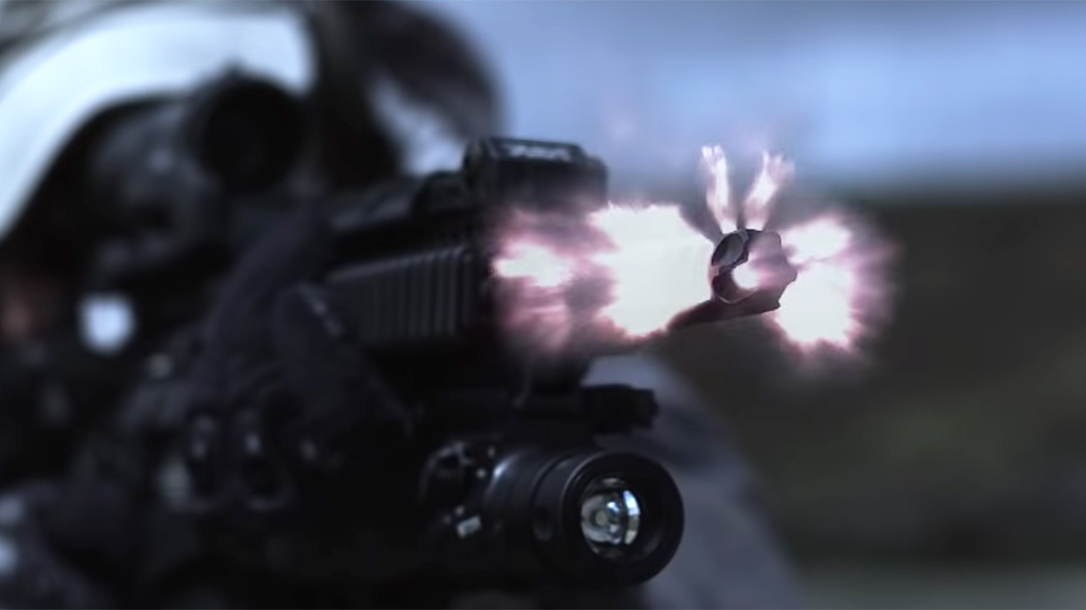How does a muzzle brake like the LANTAC Dragon fit into the firearms world? Well, the course of human history has seen quests of all types; from the religious and ideological to the scientific and even metaphysical. Each was centered around a goal of finding what can be best described as “the answer.” Even today a quest is underway. It has been in motion since the first rifle was built, but has taken a much more concrete form over the last decade or so. That quest is muzzle control.
Laugh if you will, but the passion that has been put into this challenge is honestly on par with many other quests in history. Nowhere is this more apparent than in the AR rifle world. The sheer number and configurations of muzzle brakes and related devices are astounding. Each with their own claim to superiority and innovation.
Some have excellent attributes while others will be relegated to an archive we will explore in the future and wonder just why it was made. One device that has taken center stage because of its performance is the LANTAC Dragon Muzzle Brake.
Advertisement — Continue Reading Below
Art & Science & the LANTAC Dragon
The design of a muzzle brake is as much an art as it is a science. The goal is to create a device that effectively redirects expelled gas from the muzzle in order to force the muzzle in a downward direction. This redirection offsets the natural climb of the muzzle when firing the rifle. The end result is a reduction in muzzle flip; this allows us to more easily stay on target and, in turn, shoot faster.
Simple enough on paper, but execution of this design is more complicated than most know. The balance we face in a design is weight of the device, length, and even its creation of sound when firing the rifle. If you have never been near a rifle with a poorly designed muzzle brake then you cannot understand the spleen rupturing sound associated with it. In many of my classes, students with loud brakes end out on the end of the firing line and in many cases end up eating lunch alone as the sound is so disturbing over a long period of time.

Advertisement — Continue Reading Below
LANTAC seems to have found the perfect balance of all of these factors with the Dragon. It is a sleek brake. The Dragon utilizes three gas vents on each side and four smaller holes on the top to control gas flow. Coming in at just over 2.5 inches in length, it’s barely noticeable on the rifle.
The Case of the LANTAC Dragon
LANTAC describes the performance by saying, “Its unique Short Energy Pulse system reduces length of recoil so that repeating shot energy cannot overlap and knock the shooter off target.”
They are correct without a doubt. LANTAC made the brake of hardened milspec steel. It only weighs 3.15 ounces, making its footprint smaller than you would expect.
Advertisement — Continue Reading Below
While there are obviously scientific tests that can be performed on brakes in a laboratory, most of the information we get on performance comes from the range. I have spent some time behind the Dragon and can say that it is as good as “they” say it is. It provides exceptional muzzle control while not forcing my fellow shooters to put on triple ear pro.
The brake manages the gas from the rifle in a unique way that seems to even change the tone of the shot being fired. This is difficult to explain, but the clear and well recognized crack of the 5.56 round leaving the barrel is changed. The Dragon doesn’t suppress it in anyway, but somehow softens it.
Once again, there is no suppression, so make sure you still have ear pro on at all times. Once you fire your first few rounds you will understand what I mean. The rifle goes from having a quick push in the recoil to an almost delayed pulse. As you can imagine, I have run many brakes over time and yet few have impressed me as much as the Dragon.
Advertisement — Continue Reading Below
Full-Auto Fun
Because of what I do for a living, I have even had the pleasure of running a Dragon on my select-fire M4. This is where the brake really shines. While full-auto time is enjoyable, the laws of physics creep in and muzzle rise becomes an issue. This was not the case with the Dragon. Muzzle rise was greatly diminished and allowed us to print very respectable patterns while in full-auto mode. I know full-auto fire isn’t available to everyone, but it was very telling when we did it.

Installing the brake is simple and straightforward. Simply remove the existing device on your rifle, put on the new crush washer and tighten. The brake will need to be “clocked,” which is simply a term that means it needs to be aligned.
Advertisement — Continue Reading Below
The top of the brake has four small holes that need to be pointing up. Yes, that’s all that it means. I wish I could say it was more profound, but clocking a muzzle brake is the equivalent of making sure it is right side up.
LANTAC makes the Dragon in a variety of calibers including 5.56, .308, 7.62×39 and even 9mm. When you are shopping for a brake you will inevitably end up with a short list of favorites. I would encourage you to take a hard look at the LANTAC Dragon as a very solid option. For more information, visit lantac-usa.com.
LANTAC Dragon Specs
- Material: Hardened Milspec Steel
- Finish: Nitride
- Length: 2.57 inches
- Diameter (at largest point): 0.863 inches
- Weight: 3.15 ounces
- MSRP: $142.99-$163.99
























